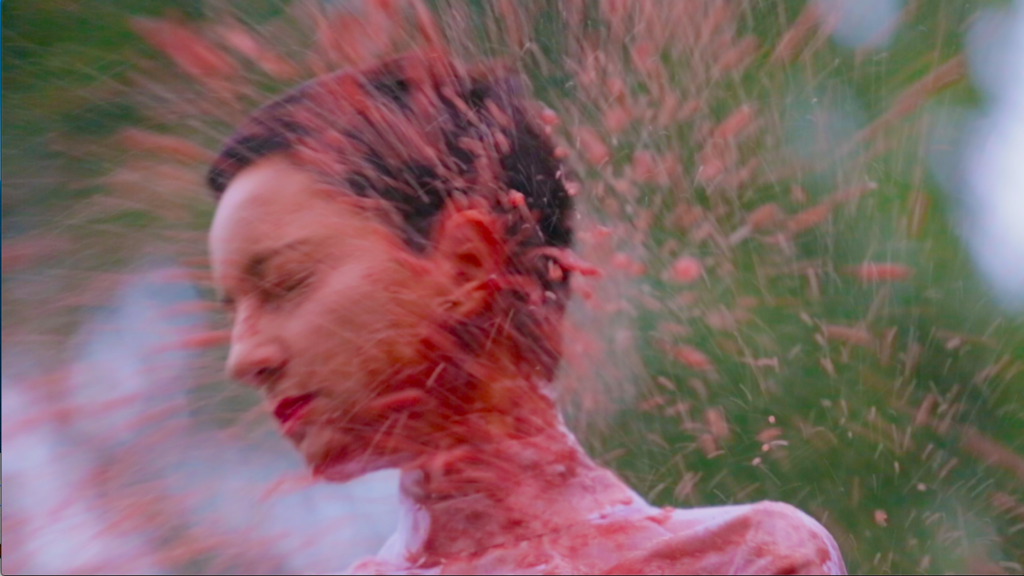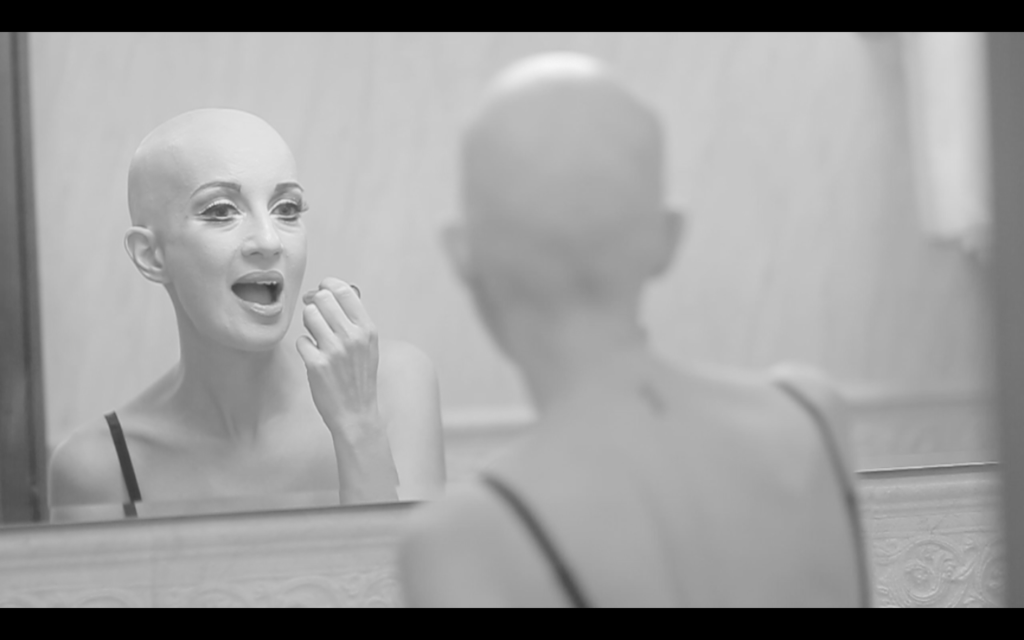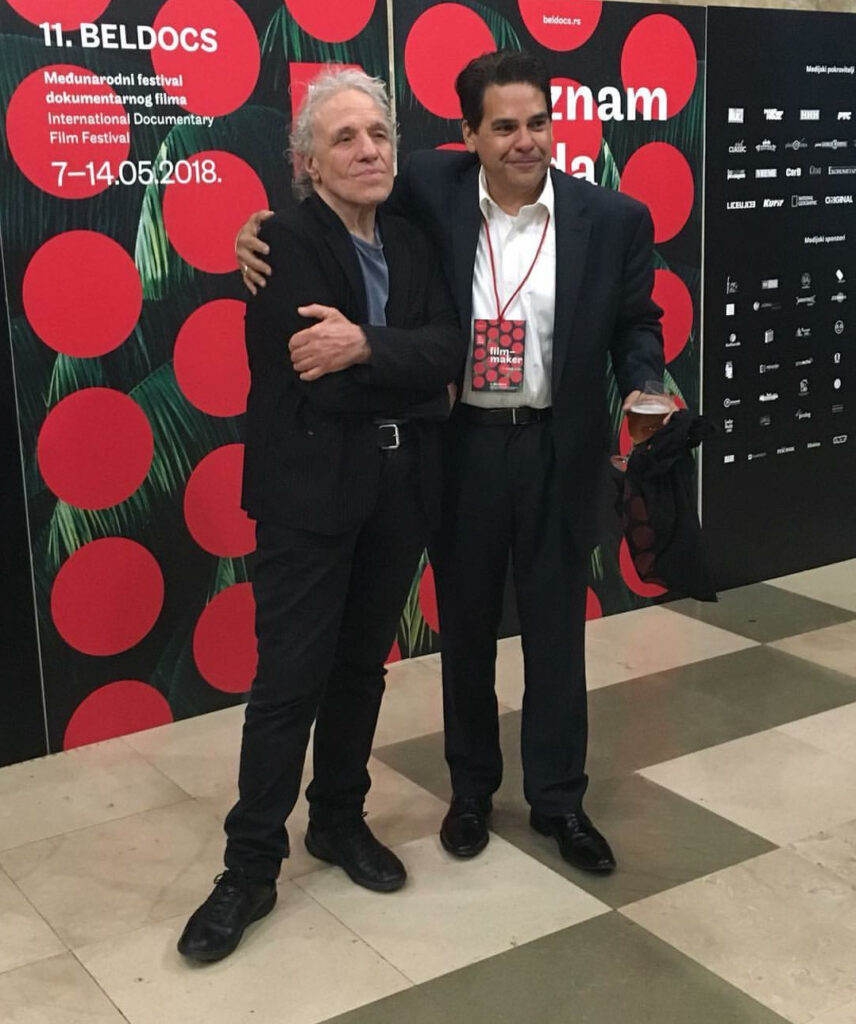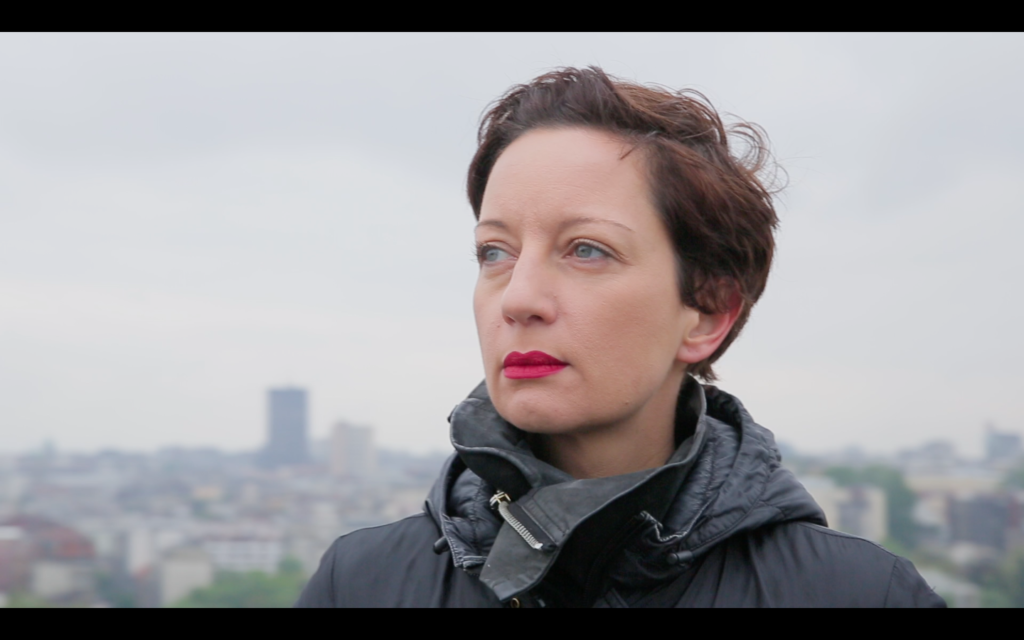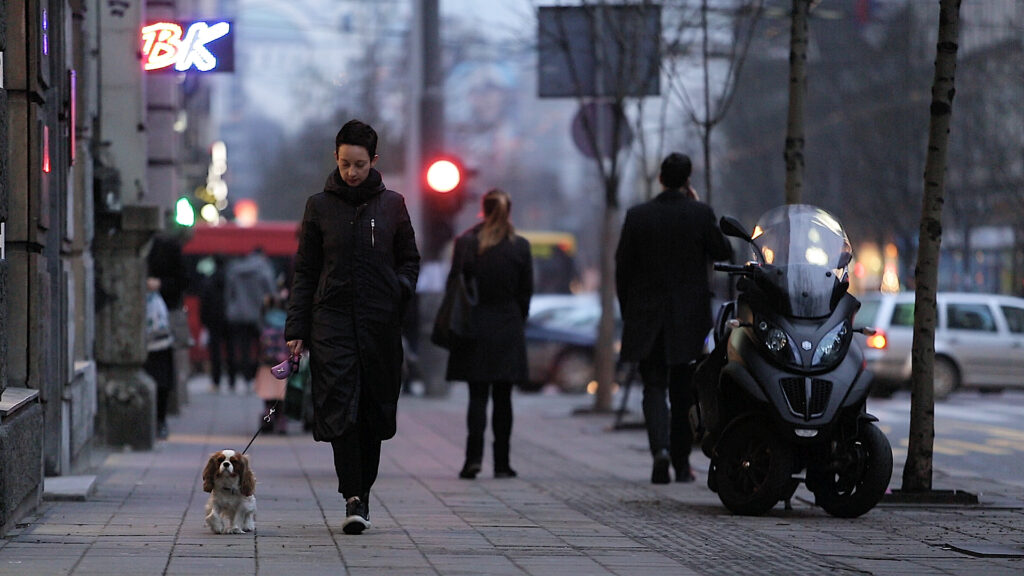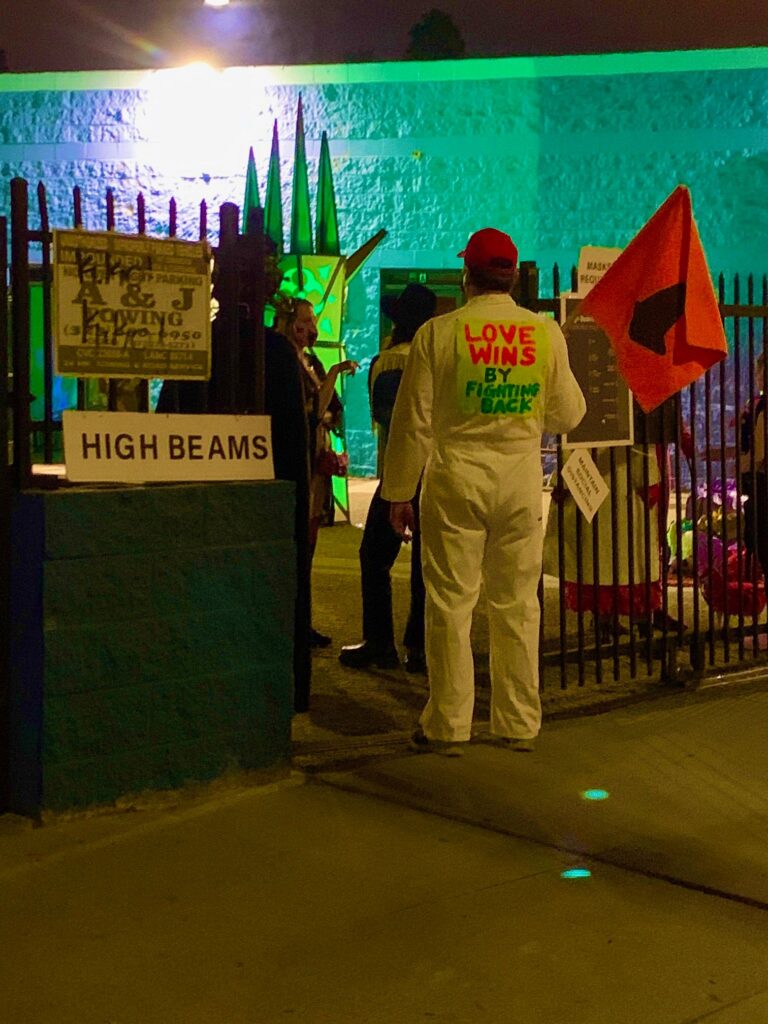
Held in the Gallery Also parking lot in Lincoln Park, High Beams 2 was an absolutely terrific treat for Halloween night. In a year like this one, an outdoor show with wildly wonderful art and artists in costumes as well as pandemic-safe masks, would’ve been a great experience no matter what art was being shown.
But thankfully, High Beams 2 went far beyond that base line, to present an exciting, visually stimulating, perfect-for-nighttime show that literally and figuratively was a blast of light.
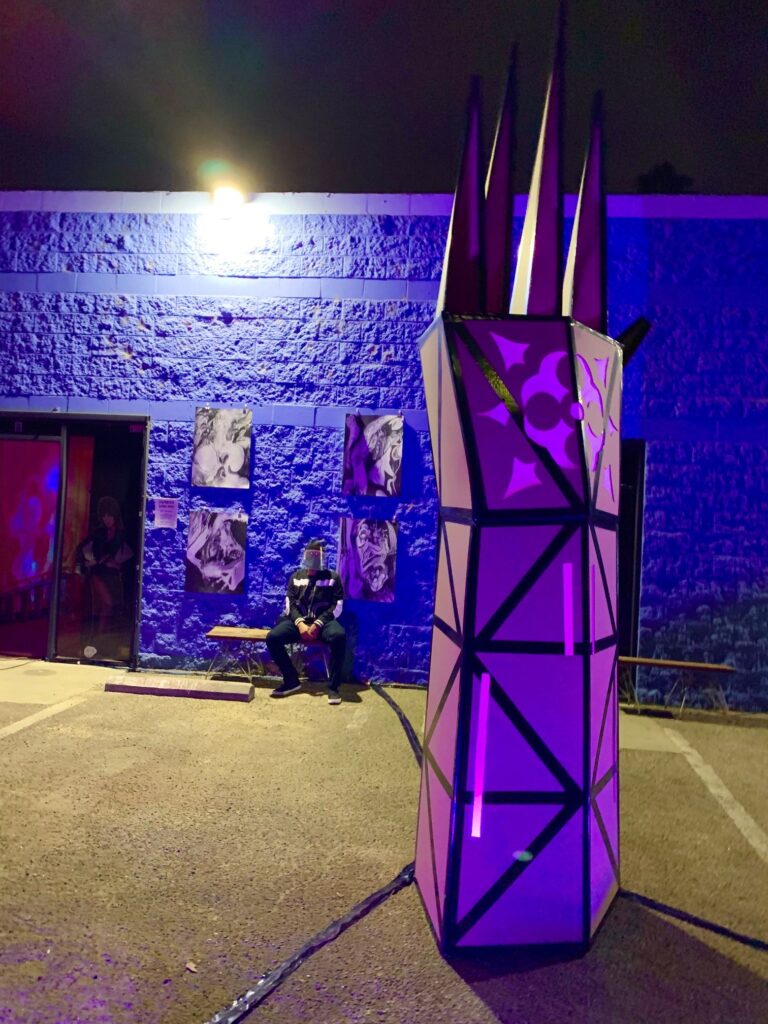
The High Beams concept of collectives that each show an installation of art is planned to continue next year, which is something to look forward to. This was the second iteration of the concept, the first having taken place on a parking garage roof and involving drive-through attendees.
Halloween night featured a curatorial collection of primarily Bendix Building art spaces in a walk-through exhibition.
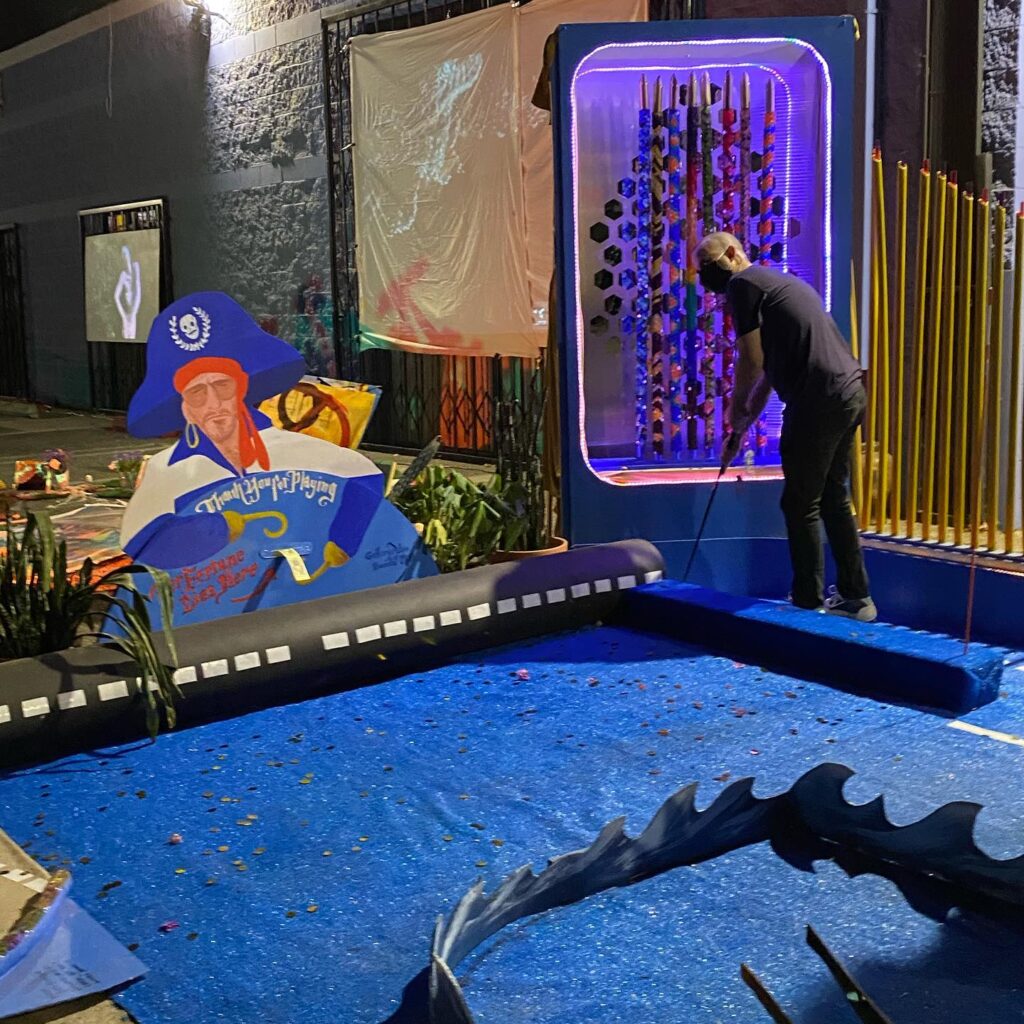

Some were interactive, such as a wonderful, haunted pirate themed mini-golf course from Gallery Also, and the mesmerizing shifting portal of Sean Noyce’s projected work, “Portal 2,” presented through his gallery with Katya Utvitsky, Noysky Projects.
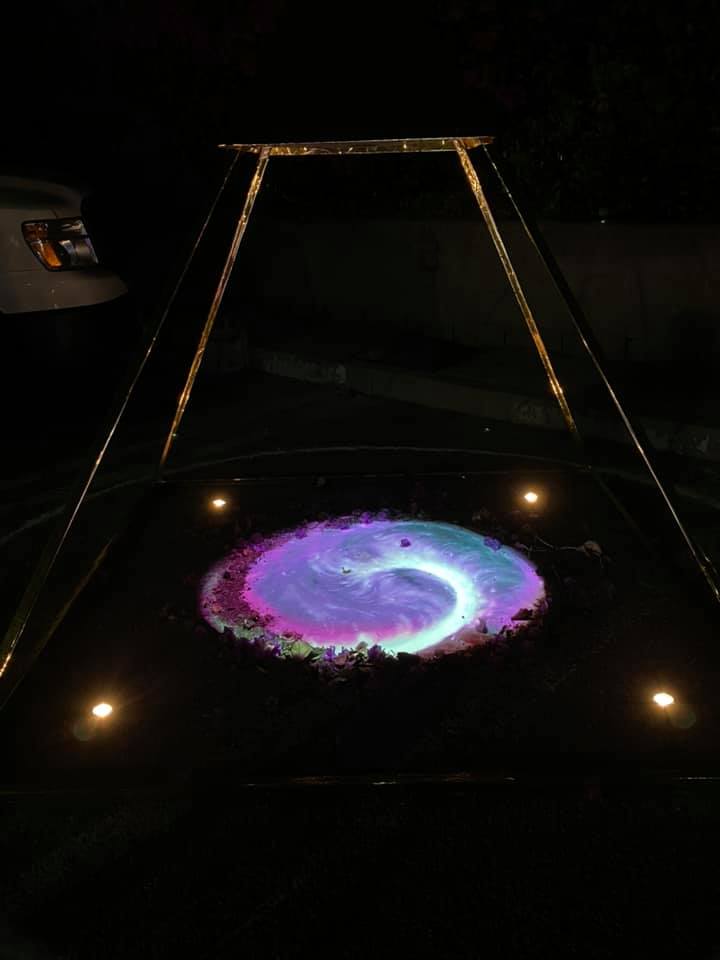
He describes the piece as “using conventions common to a witches’ magic circle, a gateway to the paternal spirits of my family in Utah.” The work uses a pyramid to harness both “masculine and feminine power, concentrating their energy at the zenith where the four corners meet.” Noyce views the work as “an opportunity to learn from the mistakes and blunders of my ancestors, while cumulatively building on their core strengths and values.” The digital projection, from a purely visual perspective, is stunning, while culturally fascinating in its exploration of homage paid to ancestors who “were imperfect at best and downright repugnant at worst.”
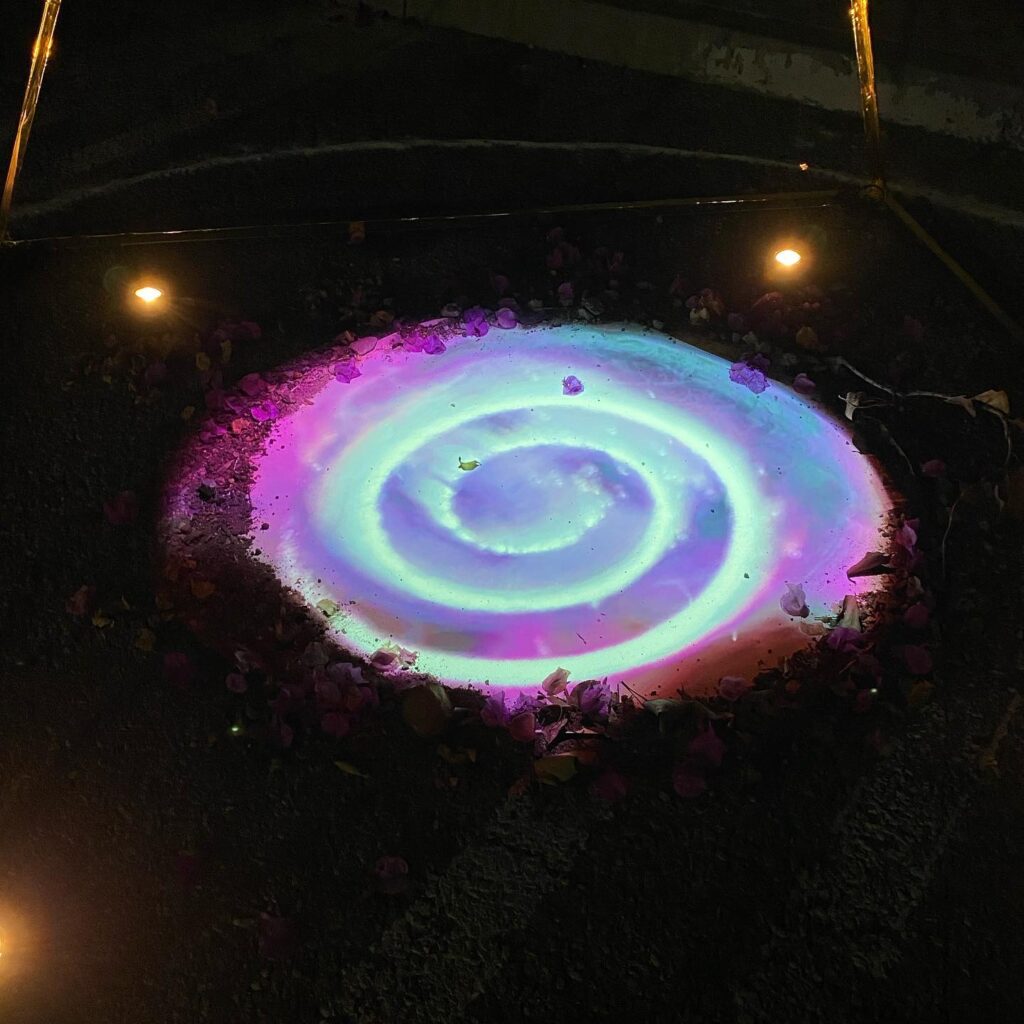
Noyce viewed the exhibition itself as “a refreshing way to experience the social aspects of an art opening, but without all the safety issues related to a traditional one. We’re all figuring out how to live our lives by maintaining our mental health and other ancillary aspects that are germane to being an artist. It makes you realize how important it all is.”

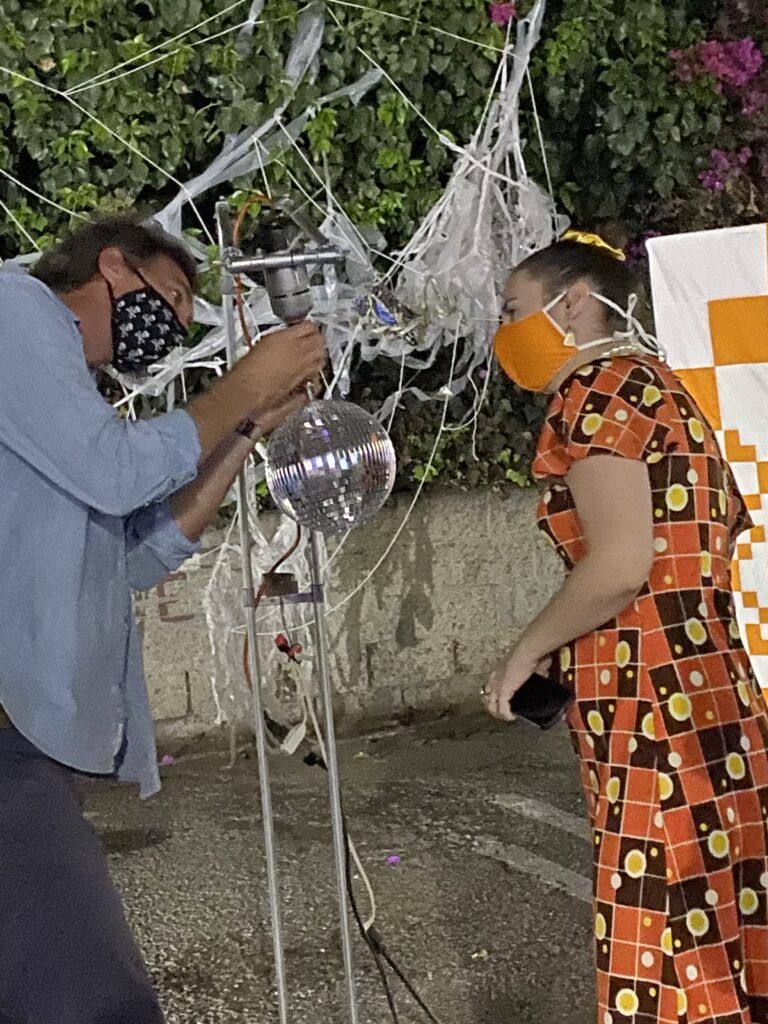
From projected images such as Noyce’s and superb film by Ibuki Kuramochi, to the mixed media sculptures presented by ARLA, to a gorgeous, crystal-like pillar of changing colors and mind-skewing geometric shape, the exhibits each had a somewhat supernatural quality that fit the theme of “The dead tell no tales.”
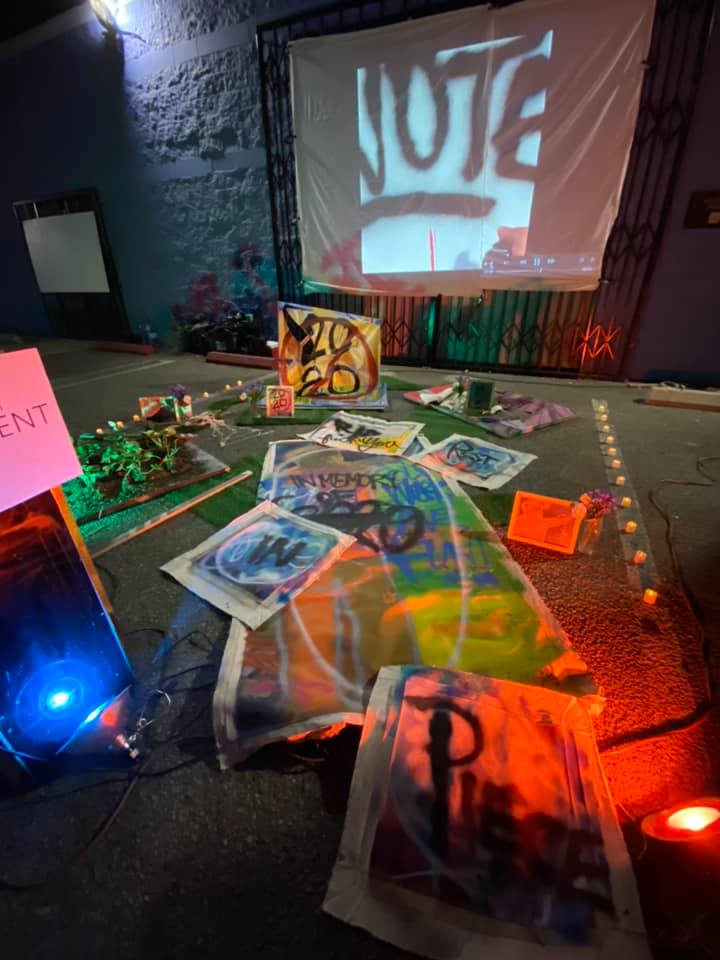

At Musuem Adjacent location, according to Hagop Najarian, “Our concept was to say goodbye to and destroy old things from 2020, so each member from our group made a video of themselves destroying their art work. I made a loop video of all 5 members videos that we palyed all night. The display was a memorial/ graveyard, if you will, of our works.”

Seen below, the wonderful pillar is Ismael de Anda III’s “Lazaro’s Run,” a riff on the science-fiction film Logan’s Run, depicting a utopian future society, revealed as a dystopia where everyone who reaches the age of thirty dies.

“To track this, each person is implanted at birth with a ‘life-clock’ crystal in the palm of the hand that changes color as they get older and begins blinking as they approach their ‘Last Day,’” de Anda explains. “’Lazaro’s Run’ is a thirteen-foot-tall mutation of the giant robotic crystal hand sculpture featured in the film… A varied, geometric, negative space ‘crystal’ pattern is featured in the center of the cardboard hand with pulsating LED lights placed inside the sculpture, allowing colored light to emanate as a beacon from the center…”

He adds “From the original film’s title, Logan is changed to Lazaro, my grandfather’s name, the Spanish version of Lazarus, a biblical figure that rises from the dead.”
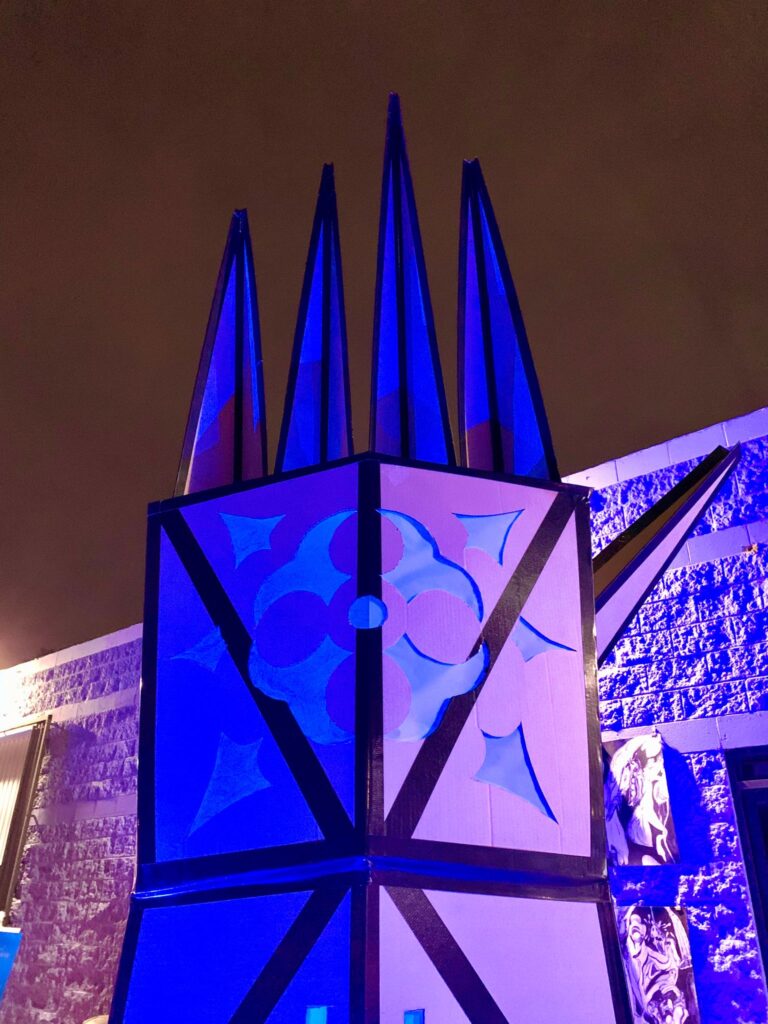
Exhibiting for Durden and Ray along with fellow collective artist Tom Dunn, who offered complex, intense, and involving wall artwork, de Anda calls his inclusion “an honor. It was exciting how all the organizers for the High Beams events are continuously looking for alternative and innovative ways to present art to the public… On this astronomical night of the rare blue full moon, observing safety protocols, I had the rare opportunity during these times to make new friends and feel a reinvigorated solidarity with L.A.’s dynamic and unique artist community.”
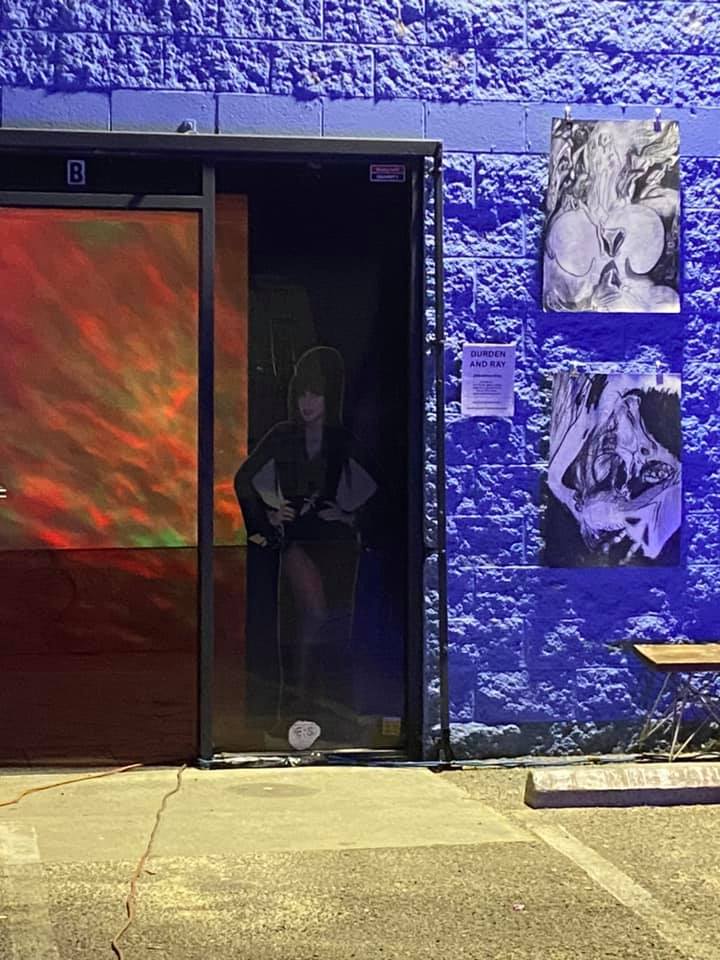

According to Durden and Ray collective curator Alanna Marcelletti, termsthe exhibition exuded “a fun-house-style” creative experience, “It has been such an exciting experience to create a show… with an amazing mix of curators from different artistic backgrounds and curatorial initiatives.”

Artist and curator Carl Baratta says the motivation for holding the second High Beams exhibition on Halloween night was primarily “fun. We knew the following week would start to get cold, and the elections were gearing up, and like everyone else, we wondered if we were trying to hold an event with ideas of civil war or whatever floating around. The pandemic is hard enough as it is, so, we decided to pick the most fun night we could to keep the momentum going after our successful run with the drive-through exhibition.”

Baratta notes “We just thought carving out some space to take a break and see unexpected things not on video chat would hopefully energize folks for the week(s) to come with election madness. We also really love throwing these events for our art community and miss the interaction, so we really pushed hard to get things together in time. For me it was really nice to show Ibuki Kuramochi who’s at home taking care of an elderly loved one. She couldn’t make it to the event in person, but it still gave her something to look forward to, and that’s in rare supply these days. We all need something to look forward to that’s positive.” Describing the experience as “great” and one that offered a fresh mix of artists, Baratta says the collectives are looking forward to more alt space High Beams events in March 2021. He says the group will “start hatching new plans for 2021 on Monday.”
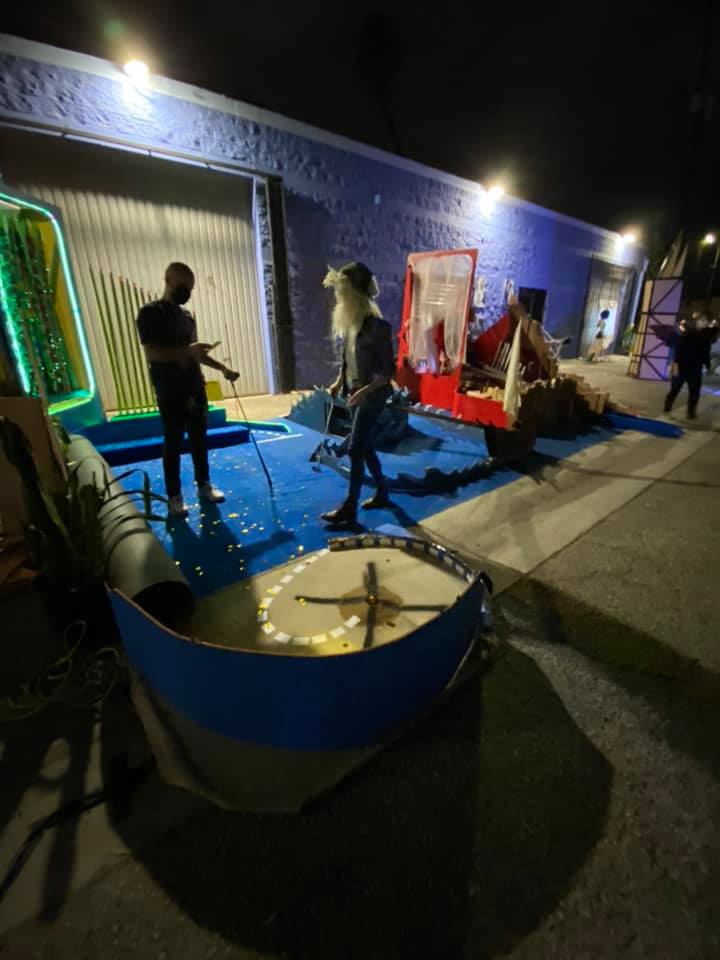
Participating art spaces/collectives this time around included:
Acceptable Risk LA, Durden and Ray, Gallery ALSO, Monte Vista Projects, Museum Adjacent, Noysky Projects, TSALA, Wow Project LA, and 515 Gallery, the latter offering a musical presentation.

Featured artists were Ismael de Anda III, Rachel Apthorp, Carl Baratta, Michael Castañeda, Coby Cerna, Carly Chubak, Sean Cully, Tirsa Delate, Tom Dunn, Dominick Garritano, Lesya Godfrey, Linus Gruszewski, Matt Haywood, Ibuki Kuramochi, Kim Marra, Easton Miller, Oliver Mayhall, Lauren Moradi, Hagop Najarian, Sean Noyce, Alaïa Parhizi, Alyssa Rogers, Adrienne Sacks, Katie Shanks, Katya Usvitsky, Josh Vasquez, Cheyann Washington, Surge Witron, Larissa Nickel.

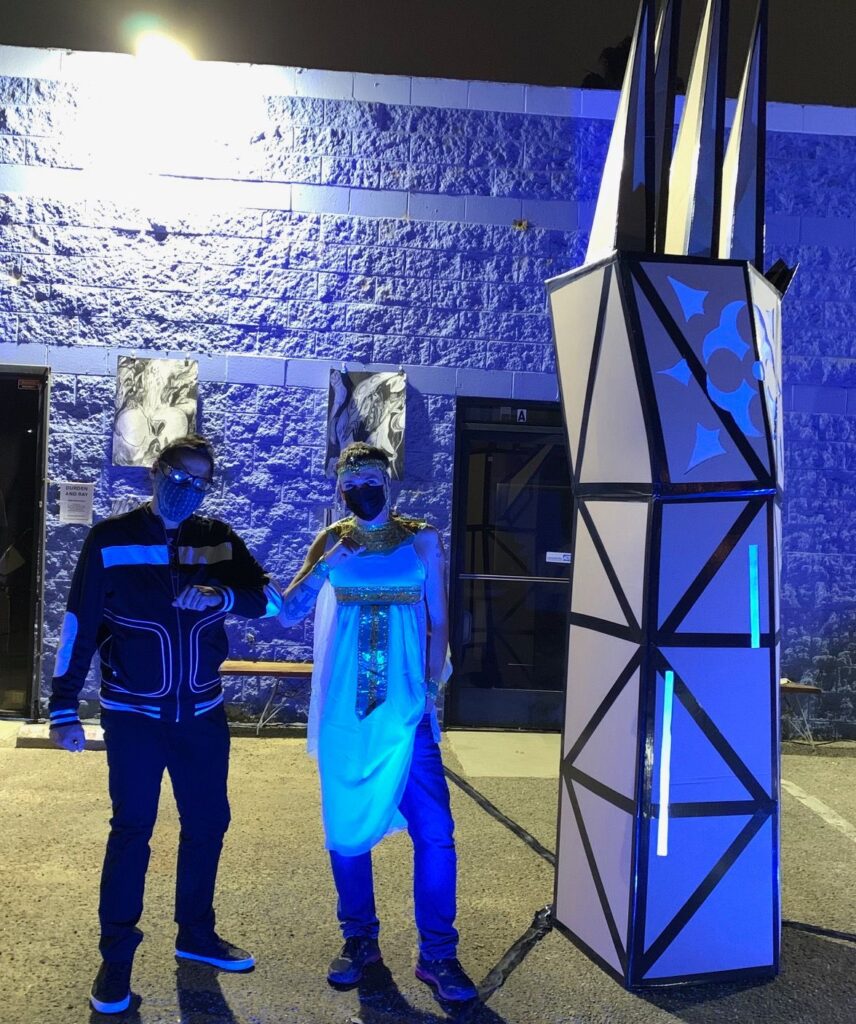

- Genie Davis; photos, Genie Davis and Ismael de Anda III




